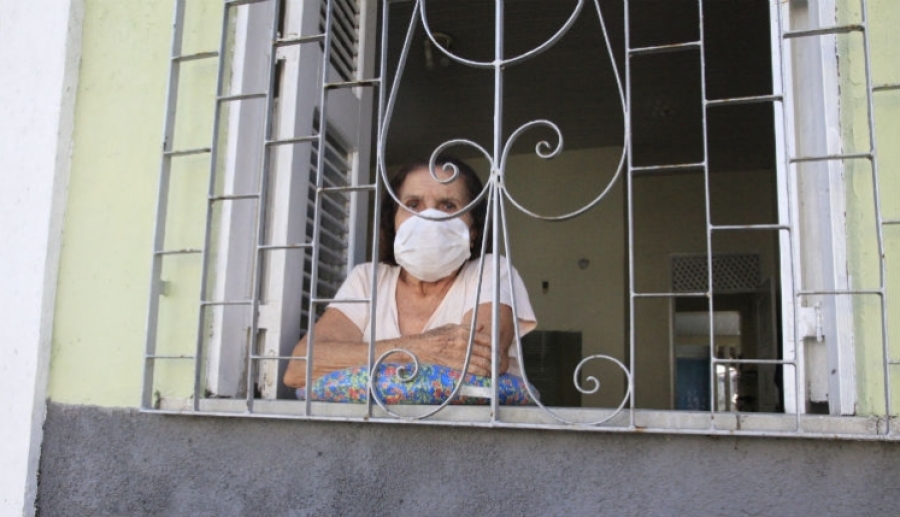RIO DE JANEIRO, BRAZIL – After a slow drop in the number of coronavirus cases and deaths over the past two months, the country is once again haunted by the pandemic. States in all regions of Brazil, such as Rio, São Paulo, Mato Grosso, Acre, and Paraná, are witnessing rolling averages of cases and deaths tripling in recent days.
Public health experts warn that municipalities in more critical conditions should reinforce social isolation measures – an initiative that they realize may be met with resistance by the population after months of quarantine and on the verge of end-of-year festivities.
In its most recent survey, released on Tuesday, November 17th, London’s Imperial College found that the average transmission rate (Rt) of Covid-19 in Brazil reached 1.1 last week – that is, each one hundred infected people infected another 110.

The infection rate is one of the main references to monitor the epidemiological development of Sars-CoV-2. This time, it increased by 0.33 and returned to virtually the same level as two weeks ago.
On Tuesday, 32,262 new cases and 676 deaths were recorded in 24 hours, totaling 5.9 million infections and 166,743 lives lost since the start of the pandemic, according to a report released by a media outlet consortium.
The rolling average of deaths reached 557, the highest in the past 35 days, with an upward trend in 14 states. This represents an increase of 45 percent compared to 15 days ago.
The rolling average of cases, in turn, stood at 29,674, 71 percent higher than two weeks ago. This index presents a rising trend in 17 federation units.
According to the Fiocruz Public Health Analytical Methods researcher Marcelo Gomes, the four days in which the number of deaths in some states was not disclosed hinders the different projections based on the data.
“This blackout (of the Ministry of Health’s system) was very serious and detrimental to all kinds of analysis, because, considering the disclosed data, there was a backlog in numbers, which were later disclosed. This should pose problems, mainly in terms of analyzing the rolling average”.
The state of Rio de Janeiro recorded a significant increase on Tuesday – of 49 percent – in the rolling average of deaths, compared to two weeks ago. The growing contagion trend in Rio de Janeiro territory is the highest of the past 50 days. Of the 173 deaths recorded on Tuesday, 141 (81.5 percent) occurred in the city of Rio. The city also pushes the number of new cases: 1,097, of the 2,554 recorded.
On Tuesday, the number of patients in the municipal ICUs reached 239 (95 percent of the total). In wards, where lighter cases stay, 394 of the 630 beds were occupied (62 percent). In the city’s SUS (National Health System) hospitals – which includes municipal, state, and federal facilities – the occupancy rate was of 80 percent in ICUs and 73 percent in wards.
On Tuesday, the São Paulo government issued a decree extending quarantine in the state for the 14th time, until December 16th, despite taking measures to reopen the economy.
São Paulo Health Secretary Jean Gorinchteyn does not rule out the implementation of more restrictive quarantine policies should the pandemic indicators continue to grow. “If we have increased rates, surely much more austere and restrictive measures will be taken in order to continue to save lives,” he said.
Alessandro Farias, Coordinator of the Diagnostic Front of the UNICAMP (University of Campinas) Task Force against Covid-19, considers that the recent increase in pandemic cases is a “surge”.
“I don’t know if these rates will continue to grow, because the current scenario in Brazil cannot be compared to the one seen in Europe, where countries had almost zeroed the number of cases until a second wave reached them. We have never come close to that reality,” he says.
“The population began to relax and went back to the streets, despite the fact that there is no vaccine. It is difficult to impose a lockdown and prevent a return to the peak of the pandemic because we need to think about solutions so that traders are not forced to close their doors.”
‘Tired’ population
Paulo Petry, Ph.D. in Epidemiology from the Federal University of Rio Grande do Sul (UFRGS), considers that the population has “grown tired of the pandemic” and that the arrival of summer has led to crowds. A consequence is the increase in the transmission rate.
“It is an inexorable cycle: incidence, hospitalizations, ICU hospitalizations, and deaths,” he laments. We have never really quarantined, we have restricted ourselves to distancing. We need to think about more severe measures and call for the population to cooperate. Unfortunately, there will be an economic impact and an emotional cost given the end-of-year festivities.”
Laura de Freitas, a microbiologist from the University of São Paulo (USP), says that the measures to lower the numbers are the known ones: social isolation, masks, and sanitizer gel.
“It is a moment for more rigid measures to be decreed, such as closing business sectors. We are experiencing an escalation of cases, the best is to close now in order to prevent a worse situation and overburden hospitals.”
Source: Extra

